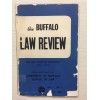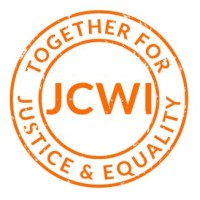Company Details
buffalo-law-review
55
548
921
buffalo.edu
0
BUF_3241507
In-progress

Buffalo Law Review Company CyberSecurity Posture
buffalo.eduThe Buffalo Law Review, published since 1951, publishes 5 issues per year, with each issue containing articles from scholars, practitioners, and judges. The Law Review also publishes member-written pieces on contemporary legal issues. The Buffalo Law Review prides itself on maintaining the highest level of integrity and objectivity in its selection process. Admission to the Law Review is open to the entire student body. Every year 28 to 32 new members are selected. Half of the new members are selected based on first-year grades, casenote scores, and diversity statements and half of the new members are selected based solely on a combination of casenote and diversity statement scores. Members may also be added from students transferring to the School of Law, based on casenote and diversity statement scores.
Company Details
buffalo-law-review
55
548
921
buffalo.edu
0
BUF_3241507
In-progress
Between 700 and 749

 BLR Global Score (TPRM)
BLR Global Score (TPRM)XXXX



No incidents recorded for Buffalo Law Review in 2025.
No incidents recorded for Buffalo Law Review in 2025.
No incidents recorded for Buffalo Law Review in 2025.
BLR cyber incidents detection timeline including parent company and subsidiaries

The Buffalo Law Review, published since 1951, publishes 5 issues per year, with each issue containing articles from scholars, practitioners, and judges. The Law Review also publishes member-written pieces on contemporary legal issues. The Buffalo Law Review prides itself on maintaining the highest level of integrity and objectivity in its selection process. Admission to the Law Review is open to the entire student body. Every year 28 to 32 new members are selected. Half of the new members are selected based on first-year grades, casenote scores, and diversity statements and half of the new members are selected based solely on a combination of casenote and diversity statement scores. Members may also be added from students transferring to the School of Law, based on casenote and diversity statement scores.


NAIC members come from diverse backgrounds, politics, and geographies—but are united in their shared commitment to protect consumers and ensure fair, competitive, and healthy insurance markets. By establishing standards, conducting peer reviews, and coordinating regulatory oversight, the NAIC suppor

The Arizona Tax Research Association (ATRA) is the only statewide taxpayer organization representing a cross section of Arizona individuals and businesses. Organized in 1940, ATRA is the largest and most respected independent and accurate source of public finance and tax policy information. ATRA rep

The Fines & Fees Justice Center seeks to restore integrity to our justice system by catalyzing a movement to eliminate the fines and fees that distort justice. Our goal is to eliminate fees in the justice system and to make fines proportional to the offense and the individual. As national center fo

The Energy Users Association of Australia (EUAA) is the national association of large electricity and gas users. We have around 100 members across Australia, which includes many of the Australia's largest users but membership also extends down to smaller businesses. The issues we focus on in

The Joint Council for the Welfare of Immigrants (JCWI) is an independent national charity which exists to campaign for justice in immigration, nationality and refugee law and policy. We believe people have always moved and always will - and all our lives are better because of it. Since we were fou

Founded in 2012, VAEEC is a 501c3 organization, headquartered in Richmond, whose goal is to facilitate discussions and share resources to advance energy efficiency throughout the Commonwealth. We engage our members to identify barriers to and opportunities for energy efficiency advancement, and to d
.png)
U.S. District Judge Lawrence Vilardo made the ruling out of concern for potential prejudice against Payton Gendron, who faces the death...
Financial institutions, insurance companies, and other businesses regulated by the New York Department of Financial Services (NYDFS) may...
The annual New York State Innovation Summit, hosted by Empire State Development's Division of Science, Technology and Innovation (NYSTAR)...
A Texas law under review by the Supreme Court could make it harder for tech companies to remove many kinds of violent, hate-filled content from their sites.
Although COVID-19 pandemic is still unfolding, class actions related to the coronavirus are already being filed in banking & Debt collection...
John Elmore will receive this year's Lawyer of the Year award from the Erie County Bar Association.
Amid the COVID-19 crisis, cybersecurity expert Jeff Rathmann has what may be the best tip for anyone who clicks on something malicious that...
Technology in data privacy and security has advanced rapidly to give consumers more protection. Trailing behind it are regulations.
Matthew Benedict, a law student at the University of Buffalo School of Law and a summer associate at local law firm, died Monday from suicide injuries.

Explore insights on cybersecurity incidents, risk posture, and Rankiteo's assessments.
The official website of Buffalo Law Review is https://www.law.buffalo.edu/beyond/journals/buffalo-law-review.html.
According to Rankiteo, Buffalo Law Review’s AI-generated cybersecurity score is 745, reflecting their Moderate security posture.
According to Rankiteo, Buffalo Law Review currently holds 0 security badges, indicating that no recognized compliance certifications are currently verified for the organization.
According to Rankiteo, Buffalo Law Review is not certified under SOC 2 Type 1.
According to Rankiteo, Buffalo Law Review does not hold a SOC 2 Type 2 certification.
According to Rankiteo, Buffalo Law Review is not listed as GDPR compliant.
According to Rankiteo, Buffalo Law Review does not currently maintain PCI DSS compliance.
According to Rankiteo, Buffalo Law Review is not compliant with HIPAA regulations.
According to Rankiteo,Buffalo Law Review is not certified under ISO 27001, indicating the absence of a formally recognized information security management framework.
Buffalo Law Review operates primarily in the Public Policy Offices industry.
Buffalo Law Review employs approximately 55 people worldwide.
Buffalo Law Review presently has no subsidiaries across any sectors.
Buffalo Law Review’s official LinkedIn profile has approximately 548 followers.
Buffalo Law Review is classified under the NAICS code 921, which corresponds to Executive, Legislative, and Other General Government Support.
No, Buffalo Law Review does not have a profile on Crunchbase.
Yes, Buffalo Law Review maintains an official LinkedIn profile, which is actively utilized for branding and talent engagement, which can be accessed here: https://www.linkedin.com/company/buffalo-law-review.
As of November 28, 2025, Rankiteo reports that Buffalo Law Review has not experienced any cybersecurity incidents.
Buffalo Law Review has an estimated 1,023 peer or competitor companies worldwide.
Total Incidents: According to Rankiteo, Buffalo Law Review has faced 0 incidents in the past.
Incident Types: The types of cybersecurity incidents that have occurred include .
.png)
Angular is a development platform for building mobile and desktop web applications using TypeScript/JavaScript and other languages. Prior to versions 19.2.16, 20.3.14, and 21.0.1, there is a XSRF token leakage via protocol-relative URLs in angular HTTP clients. The vulnerability is a Credential Leak by App Logic that leads to the unauthorized disclosure of the Cross-Site Request Forgery (XSRF) token to an attacker-controlled domain. Angular's HttpClient has a built-in XSRF protection mechanism that works by checking if a request URL starts with a protocol (http:// or https://) to determine if it is cross-origin. If the URL starts with protocol-relative URL (//), it is incorrectly treated as a same-origin request, and the XSRF token is automatically added to the X-XSRF-TOKEN header. This issue has been patched in versions 19.2.16, 20.3.14, and 21.0.1. A workaround for this issue involves avoiding using protocol-relative URLs (URLs starting with //) in HttpClient requests. All backend communication URLs should be hardcoded as relative paths (starting with a single /) or fully qualified, trusted absolute URLs.
Forge (also called `node-forge`) is a native implementation of Transport Layer Security in JavaScript. An Uncontrolled Recursion vulnerability in node-forge versions 1.3.1 and below enables remote, unauthenticated attackers to craft deep ASN.1 structures that trigger unbounded recursive parsing. This leads to a Denial-of-Service (DoS) via stack exhaustion when parsing untrusted DER inputs. This issue has been patched in version 1.3.2.
Forge (also called `node-forge`) is a native implementation of Transport Layer Security in JavaScript. An Integer Overflow vulnerability in node-forge versions 1.3.1 and below enables remote, unauthenticated attackers to craft ASN.1 structures containing OIDs with oversized arcs. These arcs may be decoded as smaller, trusted OIDs due to 32-bit bitwise truncation, enabling the bypass of downstream OID-based security decisions. This issue has been patched in version 1.3.2.
Suricata is a network IDS, IPS and NSM engine developed by the OISF (Open Information Security Foundation) and the Suricata community. Prior to versions 7.0.13 and 8.0.2, working with large buffers in Lua scripts can lead to a stack overflow. Users of Lua rules and output scripts may be affected when working with large buffers. This includes a rule passing a large buffer to a Lua script. This issue has been patched in versions 7.0.13 and 8.0.2. A workaround for this issue involves disabling Lua rules and output scripts, or making sure limits, such as stream.depth.reassembly and HTTP response body limits (response-body-limit), are set to less than half the stack size.
Suricata is a network IDS, IPS and NSM engine developed by the OISF (Open Information Security Foundation) and the Suricata community. In versions from 8.0.0 to before 8.0.2, a NULL dereference can occur when the entropy keyword is used in conjunction with base64_data. This issue has been patched in version 8.0.2. A workaround involves disabling rules that use entropy in conjunction with base64_data.

Get company history
















Every week, Rankiteo analyzes billions of signals to give organizations a sharper, faster view of emerging risks. With deeper, more actionable intelligence at their fingertips, security teams can outpace threat actors, respond instantly to Zero-Day attacks, and dramatically shrink their risk exposure window.
Identify exposed access points, detect misconfigured SSL certificates, and uncover vulnerabilities across the network infrastructure.
Gain visibility into the software components used within an organization to detect vulnerabilities, manage risk, and ensure supply chain security.
Monitor and manage all IT assets and their configurations to ensure accurate, real-time visibility across the company's technology environment.
Leverage real-time insights on active threats, malware campaigns, and emerging vulnerabilities to proactively defend against evolving cyberattacks.




